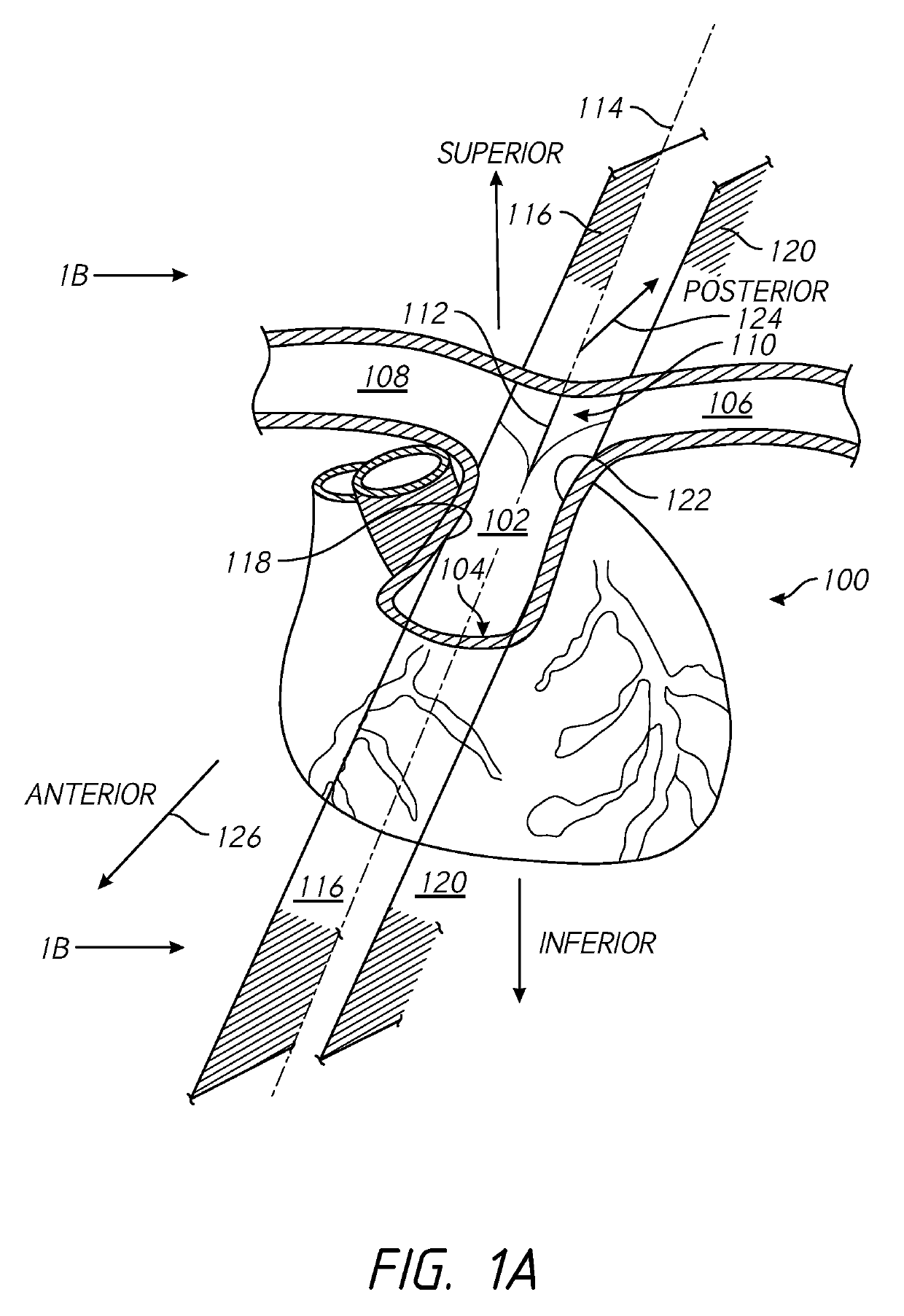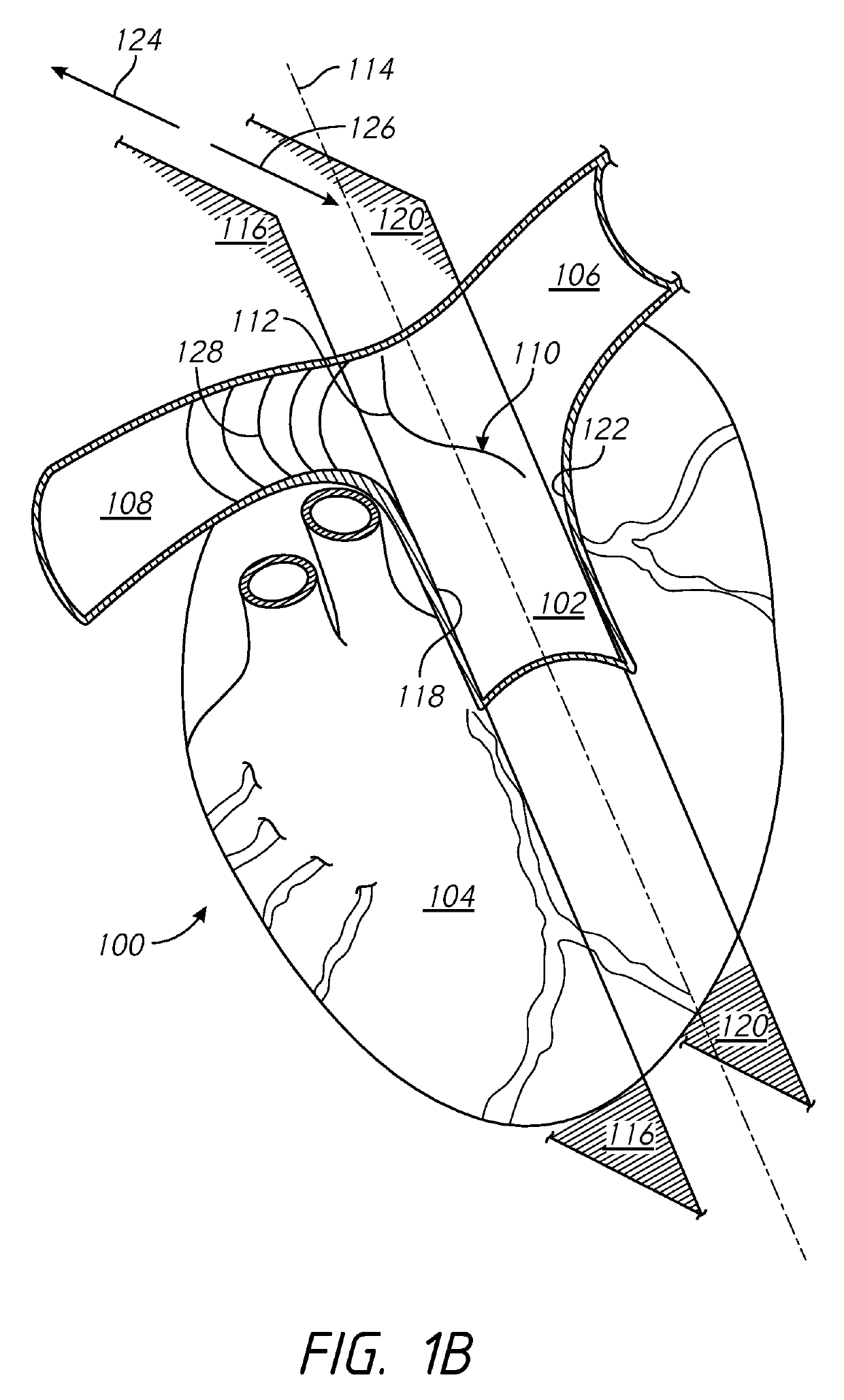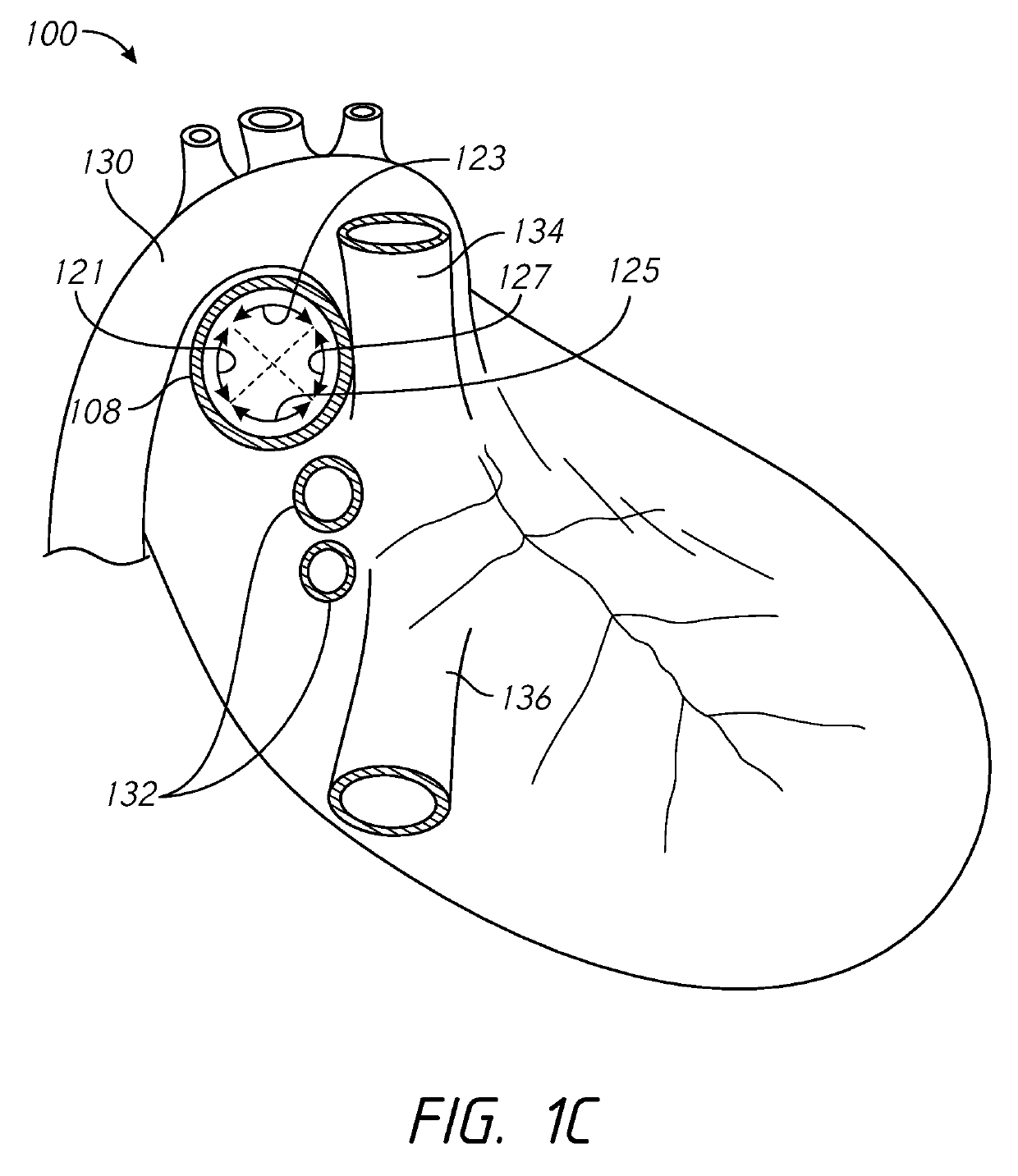Cardiac modulation facilitation methods and systems
a technology of applied in the field of cardiac modulation facilitation methods and systems, can solve the problems of affecting the ability of the heart to supply sufficient blood flow, affecting the quality of life, hospitalization and mortality, etc., and achieves the effects of increasing oxygen consumption, increasing myocardial contractility, and increasing heart contractility
- Summary
- Abstract
- Description
- Claims
- Application Information
AI Technical Summary
Benefits of technology
Problems solved by technology
Method used
Image
Examples
Embodiment Construction
[0050]Several embodiments of the present disclosure provide for methods and devices that can be used to apply electrical neuromodulation to one or more nerves in and around the heart of a patient. Several embodiments, for example, may be useful in electrical neuromodulation of patients with cardiovascular medical conditions, such as patients with acute or chronic cardiac disease. As discussed herein, several embodiments can allow for a portion of a catheter to be positioned within the vasculature of the patient in at least one of the right pulmonary artery, the left pulmonary artery, and the pulmonary trunk. Once positioned, an electrode system of the catheter can provide electrical pulses to stimulate the autonomic nervous system surrounding (e.g., proximate to) the pulmonary artery in an effort to provide adjuvant cardiac therapy to the patient. Sensed heart activity properties (e.g., non-electrical heart activity properties) can be used as the basis for making adjustments to one ...
PUM
 Login to View More
Login to View More Abstract
Description
Claims
Application Information
 Login to View More
Login to View More - R&D
- Intellectual Property
- Life Sciences
- Materials
- Tech Scout
- Unparalleled Data Quality
- Higher Quality Content
- 60% Fewer Hallucinations
Browse by: Latest US Patents, China's latest patents, Technical Efficacy Thesaurus, Application Domain, Technology Topic, Popular Technical Reports.
© 2025 PatSnap. All rights reserved.Legal|Privacy policy|Modern Slavery Act Transparency Statement|Sitemap|About US| Contact US: help@patsnap.com



